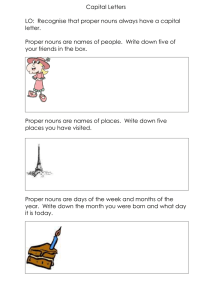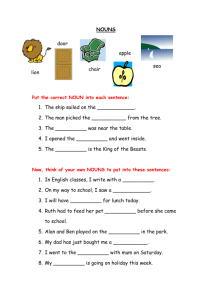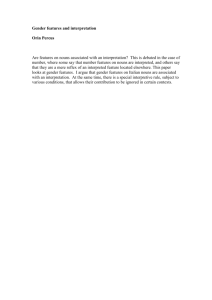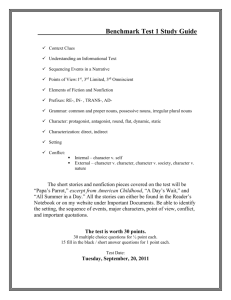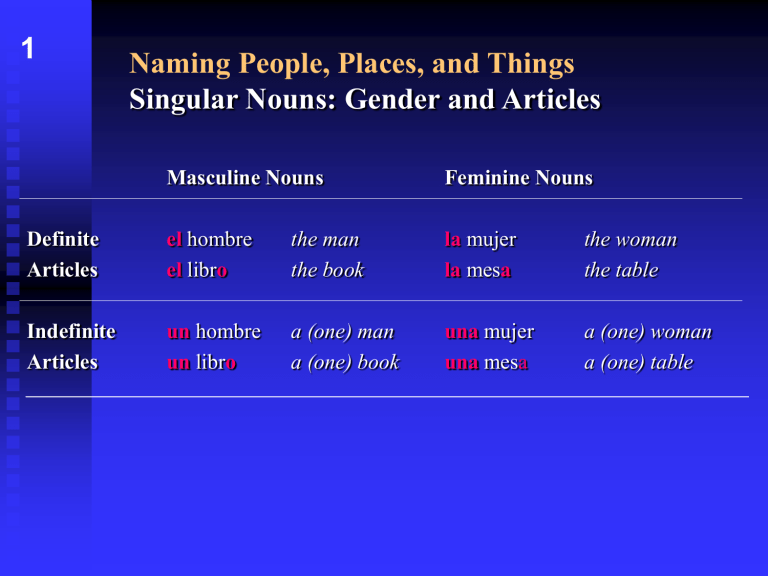
1 Naming People, Places, and Things Singular Nouns: Gender and Articles Masculine Nouns Feminine Nouns Definite Articles el hombre el libro the man the book la mujer la mesa the woman the table Indefinite Articles un hombre un libro a (one) man a (one) book una mujer una mesa a (one) woman a (one) table 2 Naming People, Places, and Things Nouns and Articles: Plural Forms Singular Plural el libro Nouns Ending la mesa in a Vowel un libro una mesa los libros las mesas unos libros unas mesas the books the tables some books some tables Nouns Ending la universidad in a Consonant un papel las universidades the universities unos papeles some papers Expressing Actions Subject Pronouns 3 Singular yo tú usted (Ud.) él ella I you (fam.) you (form.) he she Plural nosotros/nosotras vosotros/vosotras ustedes (Uds.) ellos/ellas we you (fam. Sp.) you (form.) they 3 Expressing Actions Present Tense of -ar Verbs hablar (to speak) : habl- Singular (yo) hablo I speak (tú) hablas you speak (Ud.) (él) habla (ella) you speak he/she speaks Plural (nosotros) (nosotras) (vosotros) (vosotras) (Uds.) (ellos) (ellas) hablamos we speak habláis you speak hablan you/they speak 3 Expressing Actions Negation In Spanish the word no is placed before the conjugated verb to make a negative sentence. Its English equivalent is not. El estudiante no habla español. The student does not speak Spanish. No, no necesito dinero. No, I don’t need money. 4 Getting Information Asking Yes/No Questions (Part 1) Rising Intonation A common way to form yes/no questions in Spanish is simply to make your voice rise at the end of the question. There is no Spanish O J O equivalent to English do or does in questions. Note also the use of an inverted question mark (¿) at the beginning of a question. STATEMENT: Ud. trabaja aquí todos los días. You work here every day. Arturo regresa a casa hoy. Arturo is returning home today. QUESTION: ¿Ud. trabaja aquí todos los días? Do you work here every day? ¿Arturo regresa a casa hoy? Is Arturo returning home today? 4 Getting Information Asking Yes/No Questions (Part 2) Inversion Another way to form yes/no questions is to invert the order of the subject and verb, in addition to making your voice rise at the end of the question. STATEMENT: Ud. trabaja aquí todos los días. QUESTION: ¿Trabaja Ud. aquí todos los días? STATEMENT: Arturo regresa a casa hoy. QUESTION: ¿Regresa Arturo a casa hoy?
